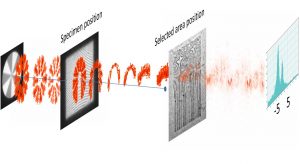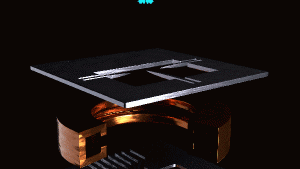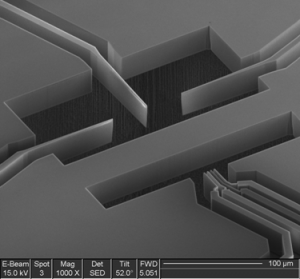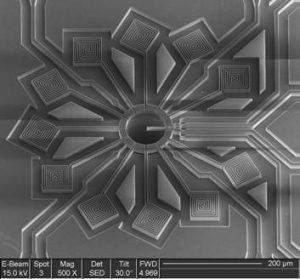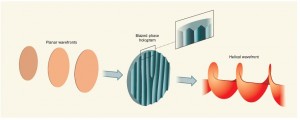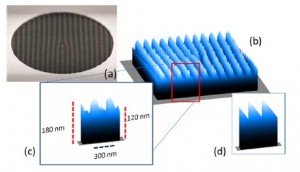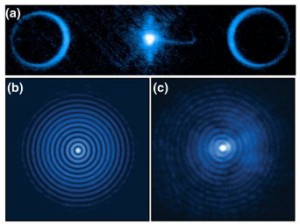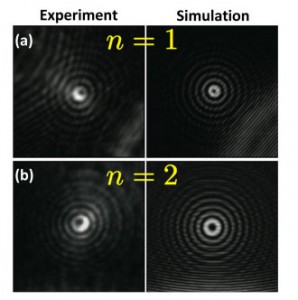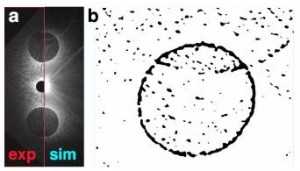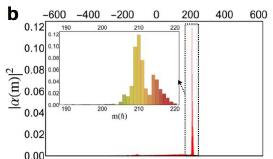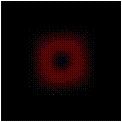ACTIVITIES
V.Grillo is coordinating the QSORT project that is now finishing but leading a long term legacy on the beam shaping and electron microscopy in general. Among these the MINEON project and SMART electrons.
Some of his group activities are here presented
MEASURING ORBITAL ANGULAR MOMENTUM
( toward single electron experiments?)
Inspired by a similar optical device we are working on a sorter of Orbital Angular Momentum (OAM). This device transform an electron OAM in a linear momentum through a coordinate transformation operated through 2 holograms or two MEMS based phase elements
More details are available
https://arxiv.org/abs/1609.09129
https://arxiv.org/abs/1910.03706
We have also proposed a device based on conductive cylinder that could measure the azimuthal current in a conductor.
https://journals.aps.org/prl/abstract/10.1103/PhysRevLett.117.154801
MEMS based electron optics
I also think that miniaturized electron optics are here to stay and we are finding new solutions for creating more device shapes and increasing the number of contacts to make this electron optics more flexible than standard one. We can add new functionalities and open to new observables thanks to this idea.
We are also considering going to a commercial product and we are studying this possibility in the context of MINEON.
The winning technology will be the joint use of artificial intelligence and MEMS to make extreme experiments finally possible.
HOLOGRAPHIC BEAM SHAPING
We created the first phase hologram to change the phase of an electron wavefunction.
In particular thanks to the use of a triangular shaped groove we could generate vortex beams at high efficiency.
We also generated Bessel beam by holographic methods
We also created the first giant vortex beam with Orbital Angular Momentum L=200h
Here you can see the experiment , the simulation , the map of the singularity and the spectrum of the actual L distribution.
SPIN-ORBITAL ANGULAR MOMENTUM THEORY AND EXPERIMENTS
We created the first multislice simulation based on Pauli equation and described the spin-orbit interaction in a magnetic lens
QUANTITATIVE STEM
The group and in particular V.Grillo has a long experience in quantitative STEM . Grilo has created the first quantitative anlysis of composition based on STEM.
Current interest are in the direction of finding the 3D position of dopant atoms inside a matrix using variable channeling conditions.
TEM METHODOLOGY:
Geometric phase analysis of strain
Convegent Beam analyis
Transport of Intensity equation
…
